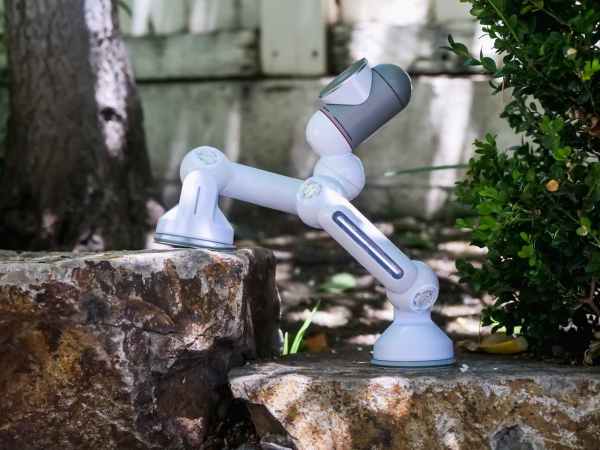Robotics has become deeply integrated into both the domestic and business spheres in recent years. We now have applications and uses that less than a decade ago would have been considered pure fiction. A prime example is “Spot”, the Boston Dynamics dog, marketed by Telefónica Empresas along with a layer of intelligence and connectivity.
The Boston Dynamics dog
This robot is capable of performing functions that involve risks for humans, such as rescue work in complex sites, security patrols or access to areas with chemical or radioactive contamination.
Recently, robots have also emerged that are designed to perform social care functions, providing support to elderly or disadvantaged people who are alone and require additional care or assistance. This development represents a revolution in the field of humanitarian aid.
In the logistics sector, robots have not only significantly improved performance in the transport and distribution of materials in factories and warehouses, tackling a variety of tasks, but have also achieved the ability to learn to move naturally, without the need for guidance systems. Faced with obstacles, these robots can adjust their routes autonomously, setting a milestone in logistics automation.
But the case I would like to explain in this article is robotics applied to the world of education.
Robotics applied to the world of education
Historically, the educational model focused on distinct phases of learning and application, but factors such as the accessibility of information through the internet and disruptive innovation have driven a shift towards a continuous competency model. The applicability and use of knowledge by the new generations is now fundamental in contrast to the traditional memorisation of data in our education system.
This brings us to STEAM, which is an acronym derived from the disciplines of science, technology, engineering, arts, mathematics (STEAM stands for Science, technology, engineering, arts, mathematics) and which is so fashionable today. STEAM represents the crucial set of skills that both young people and adults need to master now, not just for the future. Competencies that not only address the specific needs of key industries, but also cultivate cognitive and strategic skills essential for social and professional advancement in a world driven by technology and creativity.
In line with the above, the European Union has recognised the importance of these skills in a serious and determined manner, as competent development in these fields has become essential for any nation. In-depth knowledge and mastery of these skills by the younger generation will contribute not only to competitiveness but also to the generation of new jobs. Moreover, the new LOMLOE curriculum reflects this competency-based approach with an increasing technological component. Moreover, the allocation of funds to equip public schools with robotics resources is helping to democratise this tool, previously reserved for those who could afford academies or extracurricular activities. This financial boost ensures accessibility to all schools nationwide.
To delve deeper into these concepts, we have talked to Juan María López Rufo, from Telefónica Empresas, an expert in robotics dedicated to education, who tells us about how it is currently developing: robotics applied to education provides the STEM skills we mentioned previously. For children, this facilitates the creation of meaningful, cooperative, experimental, scientific and inclusive learning situations. Moreover, robotics transcends the subject of technology, addressing diverse disciplines, from caring for the environment to managing emotions.
In addition, robotics applied to education generates an attraction and special attention in the youngest students, motivating them and consolidating learning by associating it with positive emotions. This approach responds to the evolution in education recognised by entities such as Unesco, the European Union and also in our country.
Some examples of educational robotics equipment marketed by Telefónica are:
- mTiny Discover Kit: robot for the little ones to get started in programming and computational thinking without the need for screens.
- LEGO SPIKE ™ Prime: the new robotics kit from LEGO Education with which children can learn to program in a fun and practical way.
- MatataLab Robot: to learn fundamental coding concepts such as sequencing, friendly for children as young as 4 years old with no coding experience.
- Microbit: is a microcontroller that can be programmed with a simple code language to create games and animations or to control all kinds of robots.
In short, accessibility via the internet and uncertainty about the long-term applicability of acquired knowledge have driven the transition towards a competency-based education model. In this approach, the phases of learning and application are continuously integrated, establishing a constant cycle throughout life. The relevance lies not only in learning content, but also in developing the ability to use and apply this knowledge. Memorisation of facts has lost relevance to the ability to seek information and understand the practical application of concepts, marking a significant shift in education today.
To write this article I have been helped by Telefónica experts such as Reyes Cifuentes López and Gema Martín García from La Cabina, Telefónica’s technology inspiration space.








